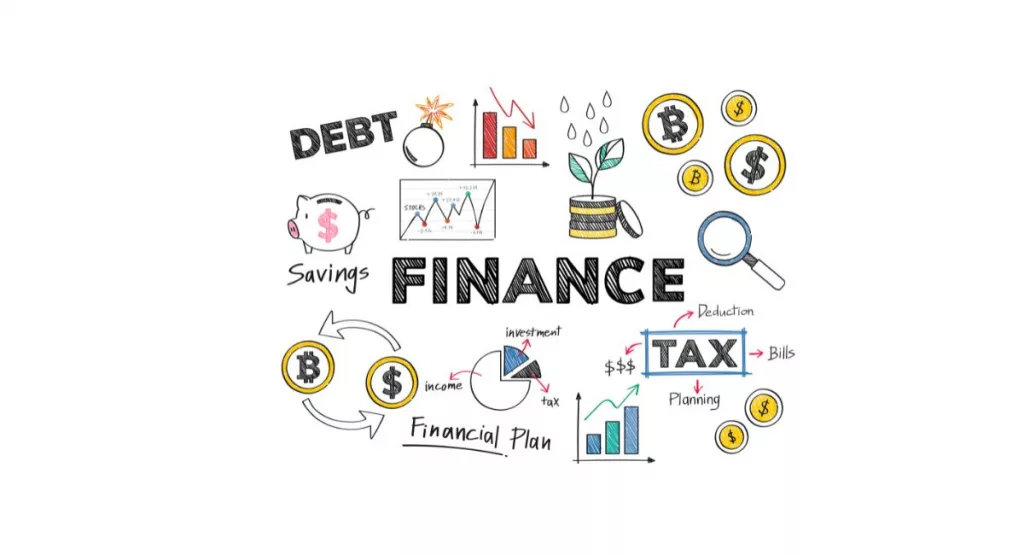Personal Finance is Possessing the skills and knowledge on financial matters to confidently take effective action that best fulfills an individual’s personal, family and global community goals.
When planning personal finances, the individual would consider the suitability to his or her needs of a range of banking products, savings accounts, credit cards and consumer loans) or investment (stock market, bonds, mutual funds) and insurance (life insurance, health insurance, disability insurance) products or participation and monitoring of individual- or employer-sponsored retirement plans, social security benefits, and income tax management.
Personal finance revolves around the following major aspects in Financial Management; which are:
- Planning
- Budgeting
- Savings
- Investment.
Personal Financial Planning
The key component of personal finance is financial planning, which is a dynamic process that requires regular monitoring and reevaluation. In general, it involves five steps:
Assessment
A person’s financial situation is assessed by compiling simplified versions of financial statements including balance sheets and income statements. A personal balance sheet lists the values of personal assets (e.g., car, house, clothes, stocks, bank account), along with personal liabilities (e.g., credit card debt, bank loan, mortgage). A personal income statement lists personal income and expenses.
Goal setting
Having multiple goals is common, including a mix of short- and long-term goals. For example, a long-term goal would be to “retire at age 60 with a personal net worth of Kshs1,000,000,” while a short-term goal would be to “save up for a new computer in the next month.” Setting financial goals helps to direct financial planning. Goal setting is done with an objective to meet certain financial requirements.
Planning
The financial plan details how to accomplish the goals. It could include, for example, reducing unnecessary expenses, increasing the employment income, or investing in the stock market.
Execution
Execution of a financial plan often requires discipline and perseverance. Many people obtain assistance from professionals such as accountants, financial, investment advisers, and lawyers.
Monitoring and Evaluation
As time passes, the financial plan must be monitored for possible adjustments or reassessments. Typical goals that most adults and young adults have are paying off credit card and/or student loan debt, investing for retirement, investing for college costs for children, paying medical expenses, and planning for passing on their property to their heirs (which is known as estate planning).
Areas of Focus
The six key areas of personal financial planning, as suggested by the Financial Planning Standards Board, are:
Financial Position
This is concerned with understanding the personal resources available by examining net worth and household cash flow. Net worth is a person’s balance sheet, calculated by adding up all assets under that person’s control, minus all liabilities of the household, at one point in time. Household cash flow totals up all the expected sources of income within a year, minus all expected expenses within the same year. From this analysis, the financial planner can determine to what degree and in what time the personal goals can be accomplished.
Adequate Protection
This refers to the analysis of how to protect a household from unforeseen risks. These risks can be divided into liability, property, death, disability, health and long-term care. Some of these risks may be self-insurable, while most will require the purchase of an insurance contract. Determining how much insurance to get, at the most cost-effective terms requires knowledge of the market for personal insurance. Business owners, professionals, athletes and entertainers require specialized insurance professionals to adequately protect themselves. Since insurance also enjoys some tax benefits, utilizing insurance investment products may be a critical piece of the overall investment planning.
Tax Planning
Typically, the income tax is the single largest expense in a household. Managing taxes is not a question of if you will pay taxes, but when and how much. Government gives many incentives in the form of tax deductions and credits, which can be used to reduce the lifetime tax burden. Most modern governments use a progressive tax. Typically, as one’s income grows, a higher marginal rate of tax must be paid. Understanding how to take advantage of the myriad tax breaks when planning one’s personal finances can make a significant impact.
Investment and Accumulation Goals
Planning how to accumulate enough money for large purchases and life events is what most people consider to be financial planning. Major reasons to accumulate assets include, purchasing a house or car, starting a business, paying for education expenses, and saving for retirement.
Budgeting
Achieving these goals requires projecting what they will cost, and when you need to withdraw funds. A major risk to the household in achieving their accumulation goal is the rate of price increases over time, or inflation. In Kenya, the Ministry of Agriculture, Livestock and Fisheries helps farmers improve their business management skills to improve management productivity, increase profitability, and fulfil their long-term goals. It is accomplished through workshops, seminars, and individual on-farm consultations involving farm business management, strategic and tactical planning, record keeping, financial analysis, and computer applications for farm managers, educators, lenders, and others. Workshops and seminars are prepared and conducted at the request of, and in teamwork with Extension Educators, Specialists, and others.
Retirement Planning
Retirement planning is the process of understanding how much it costs to live at retirement and developing a plan to distribute assets to meet any income shortfall. Methods for retirement plan include taking advantage of government allowed structures to manage tax liability including: Individual Retirement Account structures, or employer sponsored retirement plans. This is done in conjunction with the Kenya Retirement Benefits Authority which helps individuals plan for retirement.
